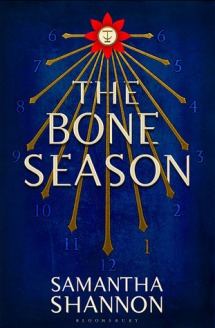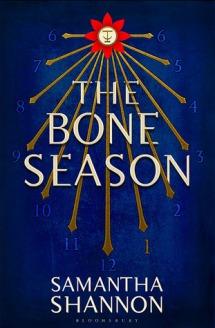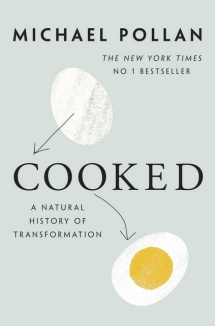Bijal Vachharajani spoke to author Rick Riordan about his newest book, House of Hades
At the start of his latest novel, American author Rick Riordan dedicates House of Hades to his readers, apologising for “that last cliff-hanger” on which the Heroes of Olympus’ third book, The Mark of Athena ended. We won’t play spoiler, but we do agree that he left us waiting anxiously for the next book. House of Hades is finally out and the quest continues where a motley crew of Roman and Greek demigods, including Percy Jackson, have to battle deadly monsters and infuriating gods, and even take on Cupid. The bestselling author mashes up mythology (at last count, it was Roman, Greek and Egyptian) with the contemporary world and the result is a series of roller coaster adventures that’re hilarious and insightful page turners. In House of Hades, the characters seem more mature, and while there’s plenty of action, there’s a tinge of melancholia as well. In an email interview with Time Out, Riordan spoke about writing contemporary mythology for young adults and on The House of Hades.
Tell us about your new novel.
The House of Hades is probably the most intense novel I’ve yet written. Two of my characters, Percy and Annabeth, must navigate Tartarus, the most dangerous part of the Underworld, while five of their friends must journey across the Mediterranean to find an ancient temple, the House of Hades, and find a way to bring Percy and Annabeth back to the world of the living.
Your novels bring together two disparate worlds – mythology and the modern world. Tell us about that.
I suppose they’re not as disparate as one might think. I like to take ancient myths and figure out what they have in common with the modern world. I have sons and daughters of the Greek gods running around in 21st-century America, fighting monsters and interacting with the Olympians. It’s a pretty easy match, actually. The myths are timeless and still relevant.
How do you craft characters such as ferocious cheerleaders and rebellious grain spirits?
I have great fun bringing old monsters up to date. There are so many wonderful creatures from the classic myths. It’s just a matter of finding a way to make them colourful, funny and engaging for modern kids. Vampire cheerleaders, evil grain spirits who look like babies with piranha teeth – why not?
How do you manage to extract humour from evil?
Humour is important to any story. It’s a leavening ingredient, and the more intense the threat, the more important it is to throw in a little comic relief. You see this in Hindu mythology as well, with Hanuman running around with his tail on fire. I think it’s just a natural human reaction, when faced with great darkness, to try lightening the mood with humour.
Despite the lead protagonist being male, your series has strong female characters.
In my personal life, I am fortunate to be surrounded by strong women – my wife, my editors, my agent, my mother. They all advise me and have helped guide and shape my career. Given that, it would be very difficult for me to craft a weak, helpless female character. It simply wouldn’t ring true for me, and I’d get lots of grief about it if I tried!
When you started writing mythology-meets -the-contemporary world, how difficult was it to humanise these gods?
I love classic mythology but unless it is told very well it can seem remote to modern children. Setting the stories in the modern world can be very invigorating. As for humanising the gods, I’d argue that the Greek gods are very human to begin with. They have all the flaws humans do – jealousy, anger, envy, hatred etc. They are the human experience, only writ large.
You mentioned in an interview that if you could choose to be a god for a day , you would choose to be Hermes.
Being Hermes would never get boring. He’s the god of so many things: communication, games of chance, commerce, trickery, ambassadors, thieves and travel. I love to travel. I’d also love to have his pair of winged shoes. That would save so much time in the airport.
How did you start writing children’s books?
My son Haley asked me to tell him some bedtime stories about Greek gods and heroes. I had taught Greek myths at the middle school level, so I was glad to comply. When I ran out of myths, he was disappointed and asked me if I could make up something new with the same characters. I thought about it for a few minutes. I remembered a creative writing project I used to do with my sixth-graders – I would let them create their own demigod hero, the son or daughter of any god they wanted, and have them describe a Greek-style quest for that hero. Off the top of my head, I made up Percy Jackson and told Haley all about his quest to recover Zeus’ lightning bolt in modern day America. It took about three nights to tell the whole story, and when I was done, Haley told me I should write it out as a book. I had a lot to do already, but I somehow found the time to write the first Percy Jackson book over the next year. I just really enjoyed writing it. The story was such fun, and so different from my adult fiction, that I found myself spending a lot of time on it. Now, I’m sure glad I did!
Tell us more about your crossover series, The Son of Sobek. Can we expect to see more?
The Son of Sobek was an experiment – combining the Greek world of Percy Jackson with the Ancient Egyptian mythology of the Kane Chronicles [Riordan’s Egyptian series]. I made it a short story, about forty pages, just to see what would happen, but it turned out so well and the fans reacted so positively I will be continuing the idea. I’m working on a second short work in which two other characters cross paths – Annabeth Chase and Sadie Kane.
Heroes of Olympus: The House of Hades, Puffin, R499







